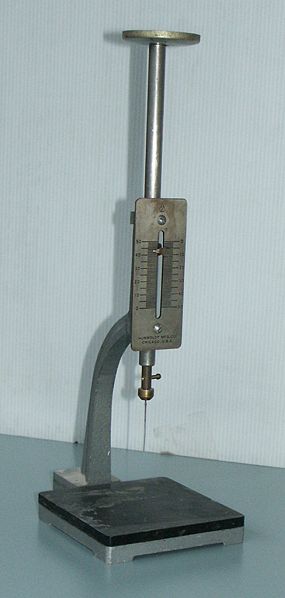Vicat softening point on:
[Wikipedia]
[Google]
[Amazon]
 Vicat softening temperature or Vicat hardness is the determination of the
Vicat softening temperature or Vicat hardness is the determination of the Vicat Softening Point: Definition
The vicat softening temperature can be used to compare the heat-characteristics of different materials. Four different methods may be used for testing. ISO 10350 Note ISO 10350 Vicat values are tested using the B50 method. Similar Standards: ASTM D1525
 Vicat softening temperature or Vicat hardness is the determination of the
Vicat softening temperature or Vicat hardness is the determination of the softening point The softening point is the temperature at which a material softens beyond some arbitrary softness. It can be determined, for example, by the Vicat method (ASTM-D1525 or ISO 306), Heat Deflection Test (ASTM-D648) or a ring and ball method (ISO 4625 ...
for materials that have no definite melting point
The melting point (or, rarely, liquefaction point) of a substance is the temperature at which it changes state from solid to liquid. At the melting point the solid and liquid phase exist in equilibrium. The melting point of a substance depends ...
, such as plastics
Plastics are a wide range of synthetic polymers, synthetic or semi-synthetic materials that use polymers as a main ingredient. Their Plasticity (physics), plasticity makes it possible for plastics to be Injection moulding, moulded, Extrusion, e ...
. It is taken as the temperature at which the specimen is penetrated to a depth of 1 mm by a flat-ended needle with a 1 mm2 circular or square cross-section. For the Vicat A test, a load of 10 N is used. For the Vicat B test, the load is 50 N.
Standards to determine Vicat softening point include ASTM
ASTM International, formerly known as American Society for Testing and Materials, is an international standards organization that develops and publishes voluntary consensus technical standards for a wide range of materials, products, systems, an ...
D 1525 and ISO
ISO is the most common abbreviation for the International Organization for Standardization.
ISO or Iso may also refer to: Business and finance
* Iso (supermarket), a chain of Danish supermarkets incorporated into the SuperBest chain in 2007
* Iso ...
306, which are largely equivalent.The vicat softening temperature can be used to compare the heat-characteristics of different materials. Four different methods may be used for testing. ISO 10350 Note ISO 10350 Vicat values are tested using the B50 method. Similar Standards: ASTM D1525
References
{{DEFAULTSORT:Vicat Softening Point Cement Polymer chemistry